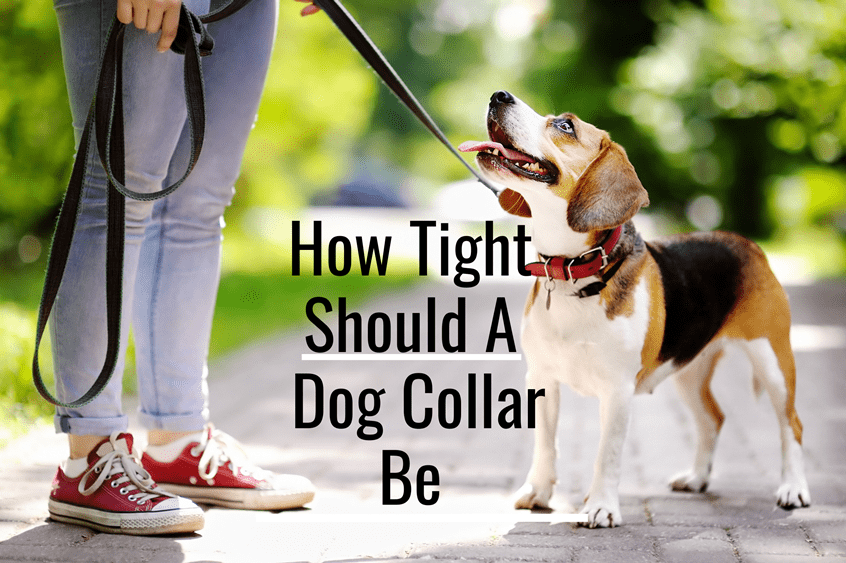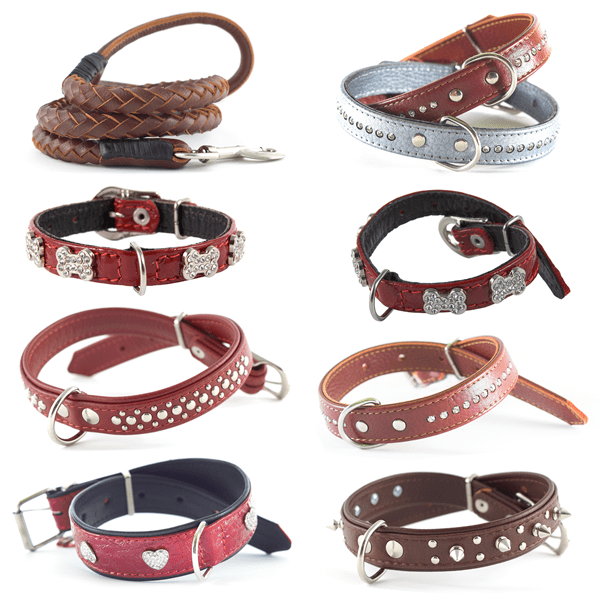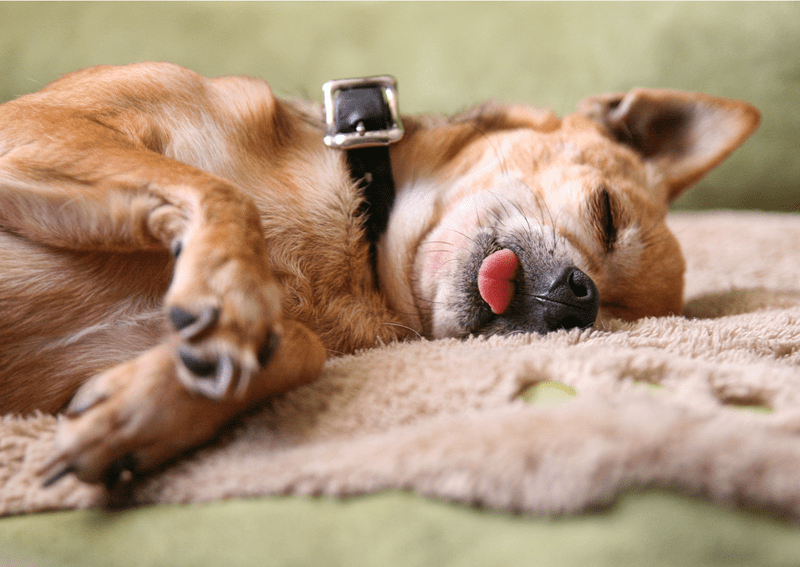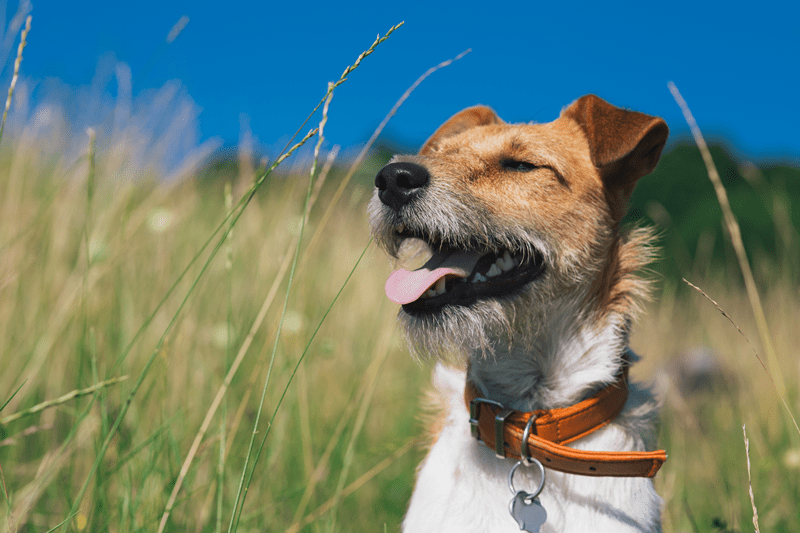How Tight Should A Dog Collar Be: A Complete Guide (Pictures)
Collars are meant to be worn with comfort in mind, but there is a limit to how tight a collar should be. So, let’s go over some different points when it comes to a dog’s collar. The most important thing is that a dog’s collar should not be so tight that it could constrict the blood flow in the neck.
If a dog’s collar is too tight, it could cause the skin on the neck to be irritated. The skin in this area could get red and sore and could form bumps on the neck.
Dogs who live in temperate climates don’t need to wear collars as long as their fur can keep them warm, but they still shouldn’t go without them for too long. Wearing collars can make dogs feel claustrophobic and uncomfortable.
How Tight Should a Dog Collar Be for a Proper Fit?

Dogs should have a snug but not tight collar for a proper fit. If a dog’s collar is too tight, it can cause health problems such as tracheal collapse.
The collar should also not be so loose that it could slide off the neck. If the collar becomes loose on the dog, he or she could be at risk of choking or swallowing its own tongue.
What Sizes and Types of Collars Do Dogs Need?
There are multiple types of collars for dogs, including nylon and leather collars. Dogs who live in cold weather need thicker collars that can be layered.
For example, if a dog lives in an area where the temperatures drop below 40 degrees Fahrenheit, he or she should have a thicker collar with a more durable lining.
Dogs who live in warmer climates, such as the south and north of the United States, may not need to layer their collars.
Dog Collars and Respiratory Health

A recent study showed that dogs who wear collars are more likely to develop respiratory problems. The study, which was conducted by researchers at the University of Sydney, looked at the health of over 1,000 dogs. The study showed that 74 percent of the dogs that wore collars developed respiratory issues.
These studies do not necessarily mean that the use of dog collars causes respiratory problems in dogs. However, if you have a dog that is experiencing signs of respiratory issues such as coughing or wheezing, you should take steps to find the cause.
Check your dog’s environment for allergens. If your dog lives in a high-pollen area, you should remove the allergens from your home to reduce the risk of allergy problems.
Dog Collars and Diet
Dog collars come in all shapes and sizes, and with a variety of materials. There are leather dog collars, nylon dog collars, and even metal dog collars.
But what’s the best type of collar for your dog? The answer depends on your dog’s diet. If your dog is on a restricted diet, you’ll want to choose a collar that won’t cause irritation or skin problems.
A nylon or leather collar is a good choice in this case. Leather collars are available in a wide variety of colors and patterns, but they do scratch and degrade over time.
How Do I Know It Is A Correctly Fitted Dog Collar?
When looking for a correctly fitted dog collar, there are a few things you need to take into account. The first is the size of your dog’s neck. You’ll want to find a collar that is snug but not too tight. You should also be able to fit two fingers between the collar and your dog’s neck.
The type of collar is also important. A leather collar will look better and last longer than a nylon or metal collar. But as I mentioned earlier, you should also be sure that the collar won’t irritate your dog’s skin.
Luxury Leather Dog Collars -5 Top Picks

If you are looking for a luxurious and stylish dog collar, then you should consider investing in a leather dog collar. Leather is a very strong and durable material, and it can add a touch of elegance to your dog’s appearance.
Here are five of the best leather dog collars on the market today:
- The Dean and Tyler Leather Dog Collar is a beautiful and stylish option that is made from top-quality leather.
- The Rogz Fancy Dog Collar is an adjustable leather collar that can be adjusted for a perfectly fit.
- The Furhaven Classic Collection Nylon Dog Collar is a nylon dog collar with a bright red lining.
- The Elegant Leather Leash and Dog Collar Set is a beautiful set that is handmade and hand-polished by skilled craftsmen.
- The Riley Blake Harness and Collar is a stylish and well-made dog collar that includes a matching leash.
What Happens if the Dog’s Collar is Too Loose?
If the dog collar is too loose, the dog can easily slip out of it, which can lead to the dog getting lost or injured. In addition, if the dog collar is too tight, then it can cause the dog pain or injury.
You should always pay attention to the size of the leather dog collar. If the collar is too small, then it can be very uncomfortable for the dog. If the collar is too large, then it can be extremely hard to fit the collar around the dog’s neck.
Signs That Your Dog’s Collar is Too Loose
If you notice any of these five signs, it means that your dog’s collar is too loose and needs to be tightened.
- Your dog can slip out of its collar very easily.
- The collar moves up and down on your dog’s neck.
- The collar twists around your dog’s neck.
- The collar hangs down low on your dog’s neck.
- The collar is too loose and doesn’t fit snugly against your dog’s neck.
Signs That Your Dog’s Collar is Too Tight

If you notice any of these four signs, it means that your dog’s collar is too tight and needs to be loosened.
- Your dog is constantly choking on its collar.
- The collar cuts into your dog’s neck.
- The collar starts to chafe or rub against your dog’s neck.
- The collar doesn’t fit snugly against your dog’s neck.
Average Collar Sizes for Each Type of Dog
The size of a dog’s collar will vary depending on the breed of the dog. However, as a general rule, small dogs will typically need a collar that is between 8 and 12 inches in circumference, while medium and large dogs will need a collar that is between 12 and 20 inches in circumference.
The examples above should give you a rough idea as to what collar size is required for each of the dog breeds.
How to Test the fit of your dog’s collar

Make sure your dog’s collar fits snugly but not too tightly. You should be able to fit two fingers between the collar and your dog’s neck.
To test the fit, put the collar on your dog and ask a friend to gently pull on it. You should feel the collar tighten up around your dog’s neck and you shouldn’t be able to remove the collar from your dog’s neck. Keep in mind that the fit of your dog’s collar will vary depending on the breed of the dog.
The D-ring of a dog’s collar or harness is the part of the collar which goes through the buckle and is attached to the leash or lead. A properly fitted collar or harness should not slip off the dog’s neck if your dog has a tendency to pull.
Side Effects of an Ill-Fitting Collar

If your dog’s collar is too tight, it can cause skin problems and discomfort. A tight collar can also restrict the dog’s breathing and lead to other health problems. A dog’s neck is delicate, so you don’t want to give it any more stress than it can handle. Here are some side effects of a collar that is too tight:
- Neck pain – When the collar is too tight, your dog’s neck can be sore. If the collar is constricting too much on his neck, your dog might start scratching at his neck and causing discomfort.
- Damage to his skin – Your dog might be rubbing and scratching at his neck excessively if the collar is too tight.
- Ringing in his ears – A tight collar could also make your dog’s ears red and sore. Also, if the collar is too tight, he might rub his ears against objects, which can cause permanent damage to the ear drum.
- Bloated or infected neck – If the collar is too tight, it can cause the skin on your dog’s neck to swell.
- Ear infections – If your dog is constantly rubbing his neck against furniture, shoes, or walls, he might be going to his ear.
How Often to Check Collar Fit
How often to check collar fit is a question that many dog owners face. The answer, of course, depends on the individual dog and the type of collar being used.
For most dogs, a quick once-over every few days should be sufficient. Of course, if your dog is limping or showing any signs of discomfort when the collar is on, then you should check the fit more frequently.
How often you should check your dog’s collar fit is also determined by how you choose to groom your dog. If you decide to clip or shave your dog, then you should check the fit as often as needed to prevent skin irritation.
How Do I Take Care Of My Dog’s Collar?
Taking care of your dog’s collar is fairly simple. However, if you don’t clean your dog’s collar and brush your dog’s coat every day, then you will be exposing your dog to a lot of bacteria and germs that can cause skin problems.
The most important thing you can do to keep your dog’s collar clean is to use a good-quality dog collar brush. You can buy these brushes at any pet supply store or find them at your local grocery store.
You should use a dog collar brush regularly and clean your dog’s collar as often as needed to remove excess hair and minimize skin problems.
Watch the tutorial
Final Thoughts: How Tight Should A Dog Collar Be?
There is a limit to how tight a collar should be, as it can cause skin irritation and swelling. For dogs who live in temperate climates, a collar is not necessary if their fur can keep them warm. However, for dogs who are in training, a thick leather collar can keep them in check without feeling uncomfortable.
Further Reading:
Can Dog Eat Pineapple? Pineapple, the Fruit vs Pineapple, the Treat
Can Dog Have Beef Jerky? The Truth About This Healthy Snack
Can Dog Have Broccoli? – Everything You Need to Know
Can Dogs Eat Eggplant? The Truth, Explained
Can Dog Eat Eggs – Everything You Need to Know About Eggs and Your Dog

